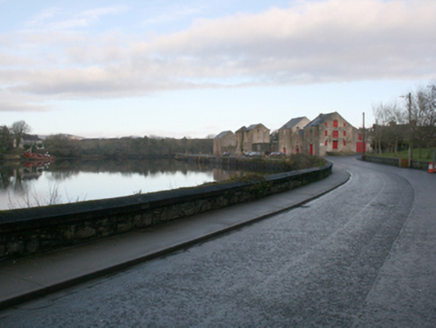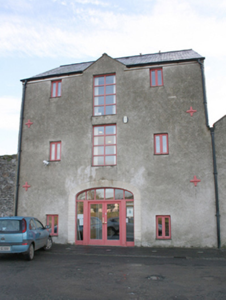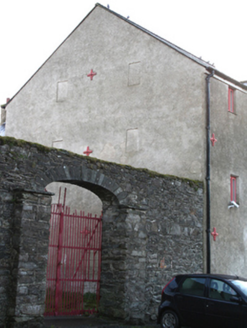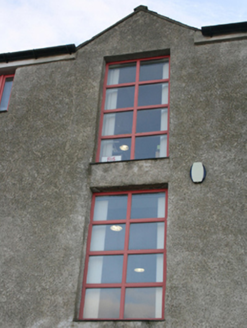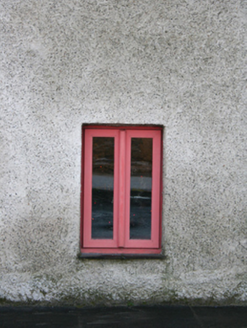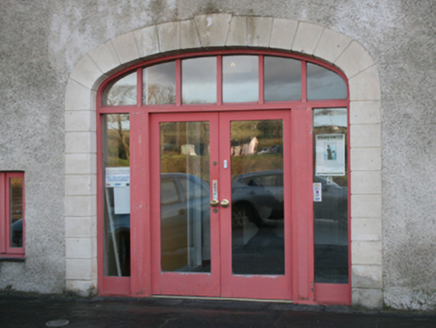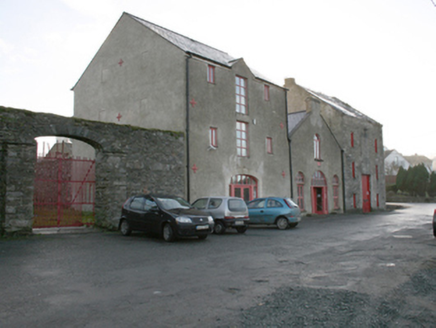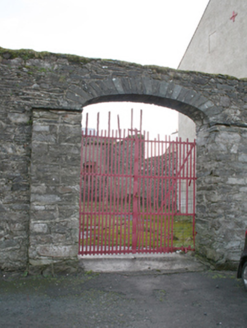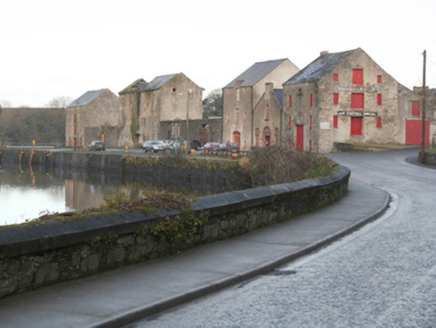Survey Data
Reg No
40800407
Rating
Regional
Categories of Special Interest
Architectural, Social, Technical
Original Use
Store/warehouse
In Use As
Heritage centre/interpretative centre
Date
1830 - 1850
Coordinates
222820, 421295
Date Recorded
10/06/2014
Date Updated
--/--/--
Description
Attached three-bay three-storey former warehouse\store, built c. 1830, having gablet over central bay to the main elevation (west), and with three-storey return to the rear (east). Now converted for use as offices and exhibition space associated with County Genealogy Centre\Ramelton Story (see 40800408 adjacent to the south). Pitched natural slate roof having projecting ashlar eaves course, surviving sections of cast-iron rainwater goods, and clay ware ridge tiles. Pitched natural slate roof to gablet; projecting roughcast rendered chimneystack to the east gable end of return. Roughcast rendered rubble stone walls with cast-iron pattrice plates and wrought-iron tie bars to the front (west) and the rear (east) elevation. Square-headed window with replacement fittings. Window openings to the north elevation now blocked. Square-headed former loading bays to the centre of the west elevation (beneath gablet), now with modern window fittings. Central shallow segmental-headed carriage-arch to the west elevation having cement rendered ruled-and-lined surround, replacement glazed timber double-doors, and replacement overlight and sidelights. Road-fronted to the north\north-east end of the Quay, Ramelton. River Leannan adjacent to the west. Complex of former warehouses\stores adjacent to the south (see 40800408 to 40800412) and to the north (see 40800405-6). Section of rubble stone boundary wall attached to the north having rubble stone buttresses to the west face, and with integral segmental-headed carriage-arch to the south end having rubble stone piers (on square-plan), dressed and squared rubble stone voussoirs, and with a pair of wrought-iron flat bar gates. Yard to the north.
Appraisal
This impressive and imposing former warehouse\stores forms part of an important collection of buildings of this type aligning the historic quayside at Ramelton. It has been sensitively converted to new uses as a museum, gallery, exhibition space and genealogy centre, and is now an important amenity for locals and visitors. Its stark industrial form is typical of its type and date, and this has been largely retained in the conversion works. The loss of the salient fabric to the openings fails to detract. The central loading bays were formerly served by a winch\pulley system to the gablet. This building dates to c. 1830, and it is one of the earlier surviving stores\warehouses to the north-east end of the quayside at Ramelton. This building serves as an historic reminder of the town’s industrial and maritime heyday during the nineteenth century. Ramelton prospered during the eighteenth and nineteenth century as a major port with trade with Britain, Norway, America, and the Caribbean, particularly important (there are accounts of ships from the Caribbean anchored in Lough Swilly and unloading exotic cargoes at Ramelton in exchange for linen, corn, meat and fish). Ramelton had the most important linen works in Donegal and many fortunes were made in the locality in its trade. The Watt family ran the largest linen works in the area by the start of the nineteenth century and were heavily involved in its trade (Samuel Watt moved to Jamaica in the early 1800s and began importing linen from Ramelton, with his brother James as agent). Corn was another major commodity in the area during the eighteenth and nineteenth centuries with a number of large mills still surviving in the area. The surviving warehouses, particularly aligned along the north-east end of the quay, attest to the level of trade and commerce in the Ramelton area. Slater’s Directory of 1846 records that ‘vessels of up to one hundred and fifty tons burthen can come up to the quayside [at Ramelton] at high water, and others, almost of any tonnage, can approach within half a mile of the town’. The town and port declined in importance towards the end of the nineteenth century, and the establishment of a railway line to nearby Letterkenny in 1909, with no rail link being built to Ramelton, hastened the decline. This former warehouse\store forms part of an important collection of industrial structures that contributes substantially to the almost unique character of the town of Ramelton, and is an integral element of the built heritage of County Donegal. As a heritage centre\gallery etc., it has helped add vibrancy to this largely abandoned section of the historic town. The section of rubble stone boundary wall with carriage-arch to the north adds to the setting and context.
